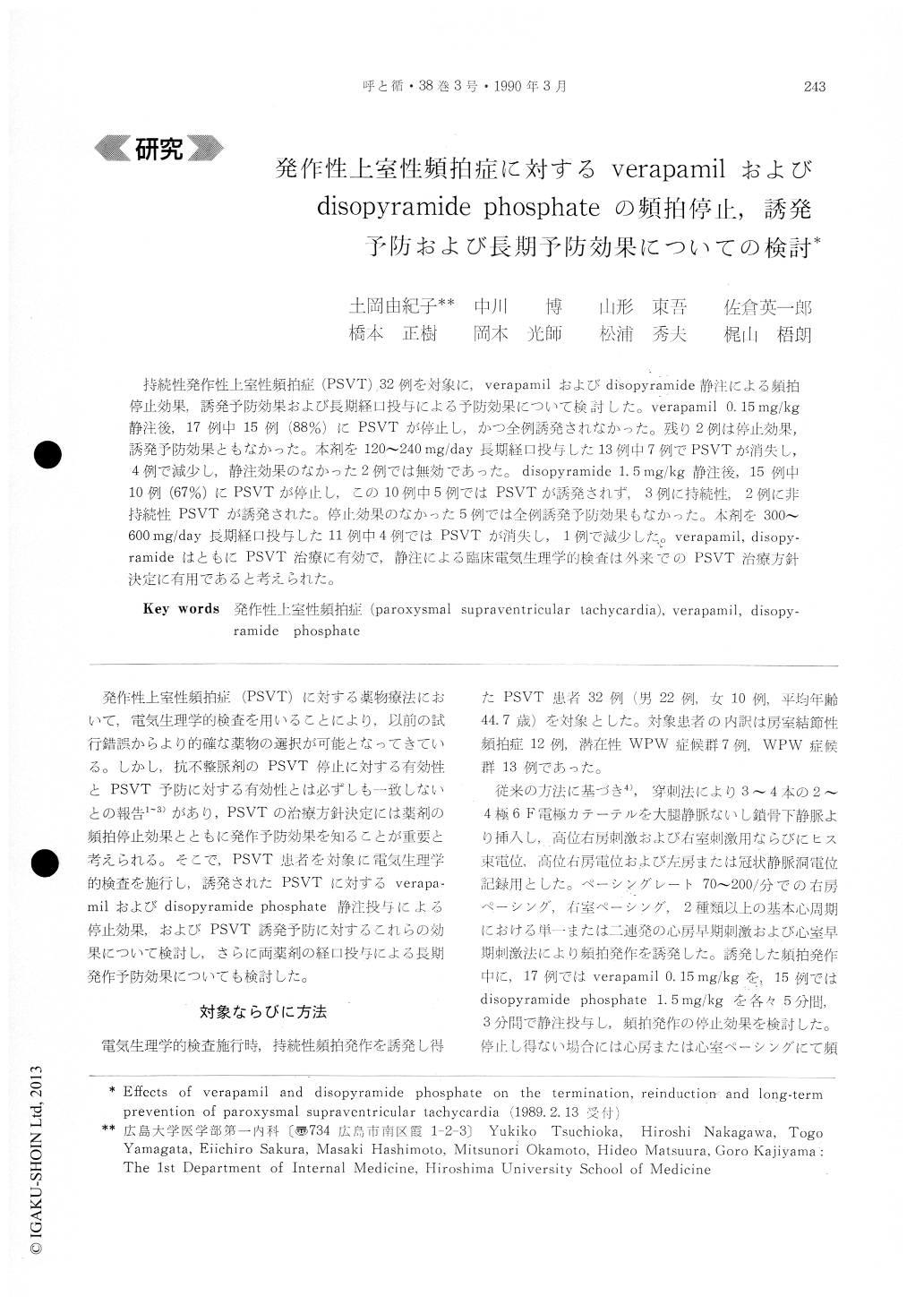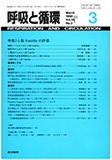Japanese
English
- 有料閲覧
- Abstract 文献概要
- 1ページ目 Look Inside
持続性発作性上室性頻拍症(PSVT)32例を対象に,verapamilおよびdisopyramide静注による頻拍停止効果,誘発予防効果および長期経口投与による予防効果について検討した。verapamil 0.15mg/kg静注後,17例中15例(88%)にPSVTが停止し,かつ全例誘発されなかった。残り2例は停止効果,誘発予防効果ともなかった。本剤を120〜240mg/day長期経口投与した13例中7例でPSVTが消失し,4例で減少し,静注効果のなかった2例では無効であった。disopyramide1.5mg/kg静注後,15例中10例(67%)にPSVTが停止し,この10例中5例ではPSVTが誘発されず,3例に持続性,2例に非持続性PSVTが誘発された。停止効果のなかった5例では全例誘発予防効果もなかった。本剤を300〜600mg/day長期経口投与した11例中4例ではPSVTが消失し,1例で減少した。verapamil,disopy-ramideはともにPSVT治療に有効で,静注による臨床電気生理学的検査は外来でのPSVT治療方針決定に有用であると考えられた。
The efficacy of verapamil and disopyramide phos-phate for the termination and prevention of paro-xysmal supraventricular tachycardia (PSVT) were studied electrophysiologically in 32 patients, with inducible sustained PSVT (17 patients received vera-pamil, 15 patients received disopyramide). Twelve patients had atrioventricular nodal tachycardia, 7 hadconcealed and 13 had overt Wolff-Parkinson-White syndrome. Intravenous verapamil (0.15mg/kg) temi-nated the sustained PSVT in 15 of the 17 patients (88%) by production of AV block in 13 patients, VA block in one, and a ventricular premature beat in one. PSVT could not be induced in any of these 15 patients after they had received verapamil. In the remaining 2 patients, PSVT could not be terminated by the use of verapamil, but the cycle lengths of PSVT were lengthened. Long-term oral dosages of verapamil of 120-240mg/day were administered in 13 of the 17 patients. All patients except two, whose PSVT was unable to be effected by intravenous verapamil, were well controlled: PSVT disappeared in 7 patients and decreased in 4. Intravenous diso-pyramide (1.5mg/kg) terminated induced PSVT in 10 of the 15 patients (67%) by production of VA block.Although PSVT could not be reinitiated in 5 of these 10 patients, non-sustained PSVT was induced in 2 and sustained PSVT was induced in 3 after having received disopyramide. PSVT was induced in all of the 5 patients who failed to respond to disopyra-mide. The cycle lengths of PSVT after administra-tion of disopyramide remained unchanged. Long-term oral doses of disopyramide (300-600mg/day) was administered in 11 of the 15 patients. 5 patients were well controlled: PSVT disappeared in 4 pati-ents and decreased in one. Oral disopyramide was ineffective in the other 6 patients. In conclusion, we can say that verapamil and disopyramide were useful agents for the management of PSVT. Elect-rophysiological study of patients receiving intrave-nous administration of these agents was necessary for the therapy of PSVT in an outpatient clinic.

Copyright © 1990, Igaku-Shoin Ltd. All rights reserved.


